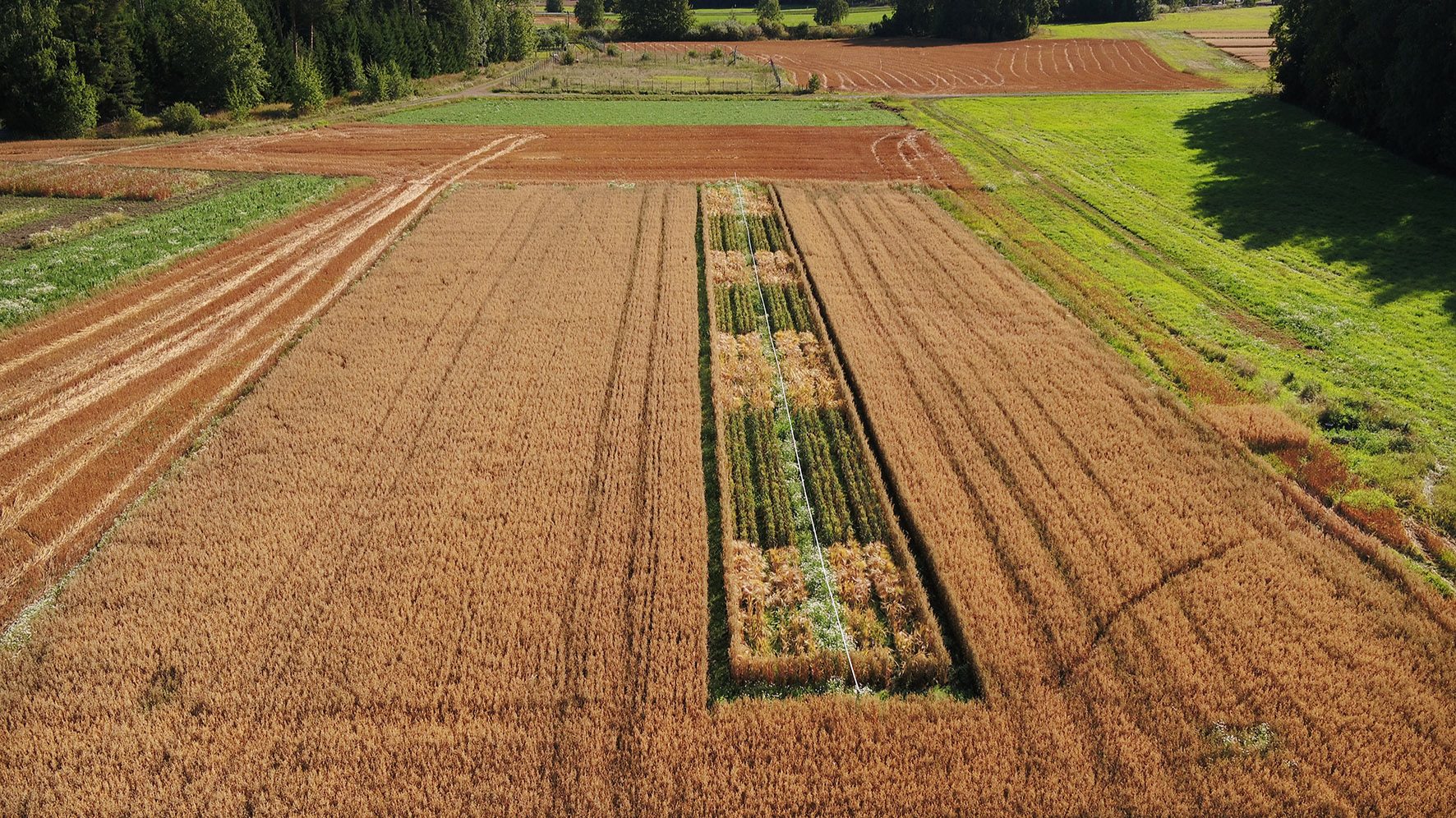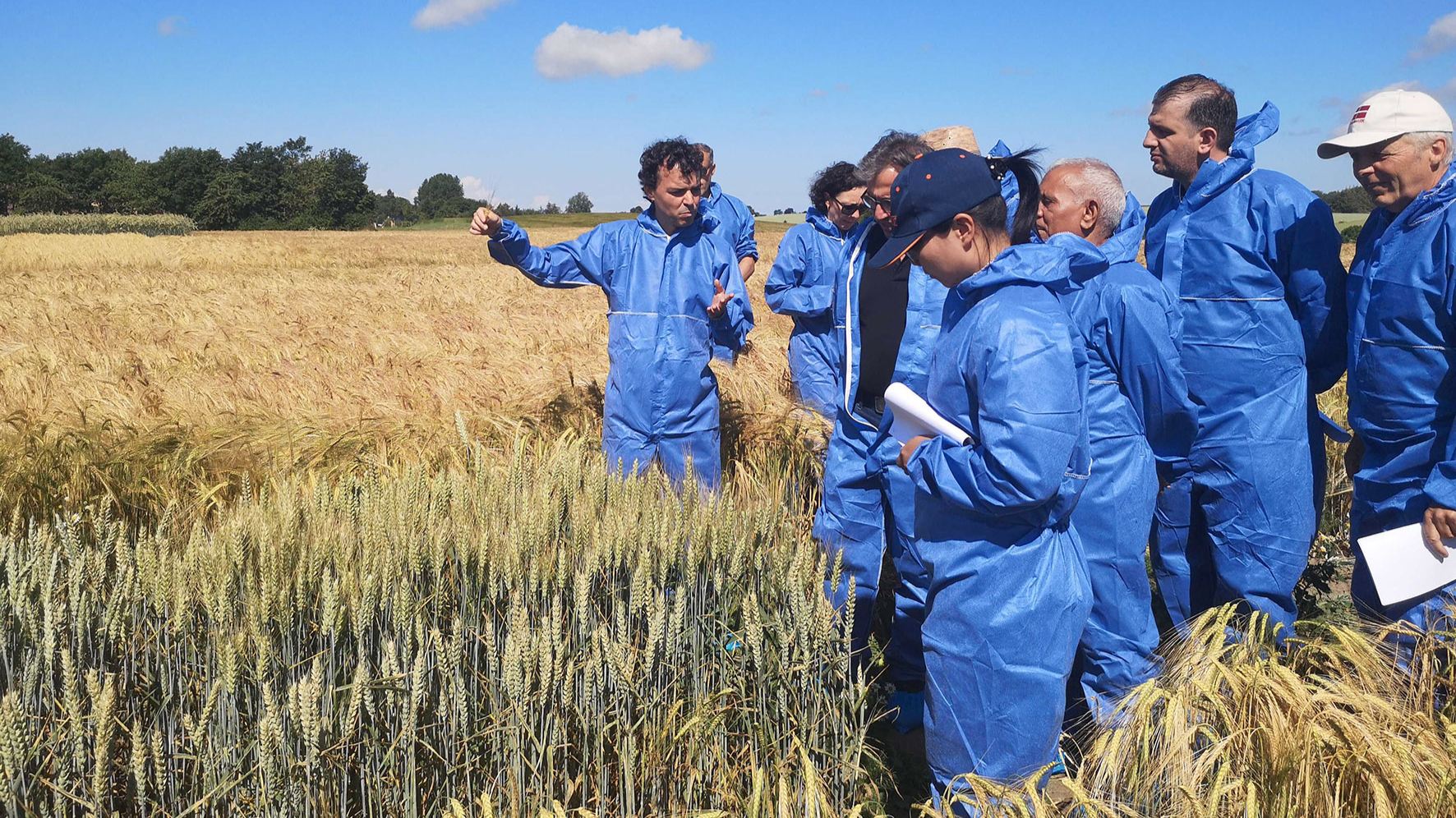
CResWheat field trial at Lantmännen, Sweden. Photo: Therése Bengtsson.
CResWheat – Pre-breeding for Nordic Climate-Resilient Spring Wheat
Project Leader:
Therése Bengtsson, Associate Professor, Swedish University of Agricultural Sciences, Sweden.
Project Partners:
Plant breeding entities: Boreal Plant Breeding, Finland; Graminor, Norway; Lantmännen, Sweden; Nordic Seed and Sejet Plant Breeding Denmark.
Academic institutions: Aarhus University, Denmark; National Resources Institute Finland (LUKE), Finland; Norwegian University of Life Sciences (NMBU), Norway; Swedish University of Agricultural Sciences (SLU), Sweden.
Project Grants:
2021-2023: TSEK 14.536 (shared equally between the PPP and partners).
Main Goals:
- Improve spring wheat breeding programs in the Nordic countries by promoting knowledge exchange among project partners and generating new knowledge through a large-scale experiment in the Nordic region.
- Investigate the virulence structure of rust and leaf blotch populations in the Nordic region and identify potential threats from new races.
- Create a comprehensive database of genetic information and breeding tools, including genetic markers linked to resistance and desirable agronomic traits.
- Identify Nordic drought-tolerant genotypes and gain insights into the biochemical basis of their tolerance.
- Establish mapping populations for key diseases and traits essential for adaptation to the Nordic environment, facilitating backcrossing and association mapping efforts.
- Train graduate students and postdoctoral fellows.
CResWheat aims to support the breeding of climate-resilient spring wheat by identifying genetic resources for disease resistance, drought tolerance and important adaptive traits for the Nordic region, by conducting genetic studies and by making germplasm and related markers available to breeders. This goal is crucial as Nordic spring wheat production faces challenges such as a limited growing season, threats from pests and pathogens, and the impacts of climate change with more frequent periods of heavy rainfalls and drought.
To achieve this aim, we evaluated European elite spring wheat material for more than 20 traits in 24 field trials at seven locations in four Nordic countries. Donors were identified for resistance to key wheat diseases including yellow-, leaf- and stem rust, Septoria tritici blotch, powdery mildew, Stagonospora nodorum blotch, and tan spot. Additionally, donors have been identified for important traits like resistance to pre-harvest sprouting, maturity, plant height, yield components, and tolerance to early-season drought.
Strategic crosses have resulted in the development of 16 segregating populations for introgression of resistance to the diseases of focus and pre-harvest sprouting into adapted elite material. Next, genetic markers linked to these traits will be validated in the segregating populations using multi-environment trials in the Nordic countries and Estonia. This validation process is crucial to ensure the precision and reliability of the markers for effective marker-assisted selection in breeding programs.
Additionally, future efforts will include the evaluation of a collection of old landraces and cultivars from the Nordic Genetic Resource Center (NordGen) to identify sources of resistance to gout fly (Chlorops pumilionis), a newly re-emerged pest in Nordic spring wheat, and to introgress this trait into adapted elite germplasm.
CResWheat has fostered knowledge exchange among partners, promoting collaboration through the sharing of information, material, and field locations across diverse environments. Furthermore, the project has played a vital role in educating the next generation of plant breeders, providing hands-on experience to PhD students and postdoctoral fellows.
/Therése Bengtsson, Associate Professor, SLU

Disease nursery at LUKE, Finland. Photographer: Sanna Kulmala.
